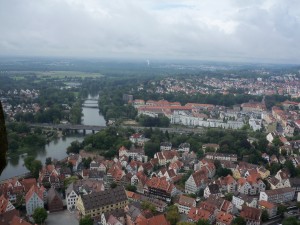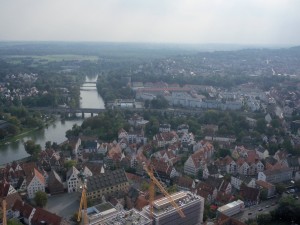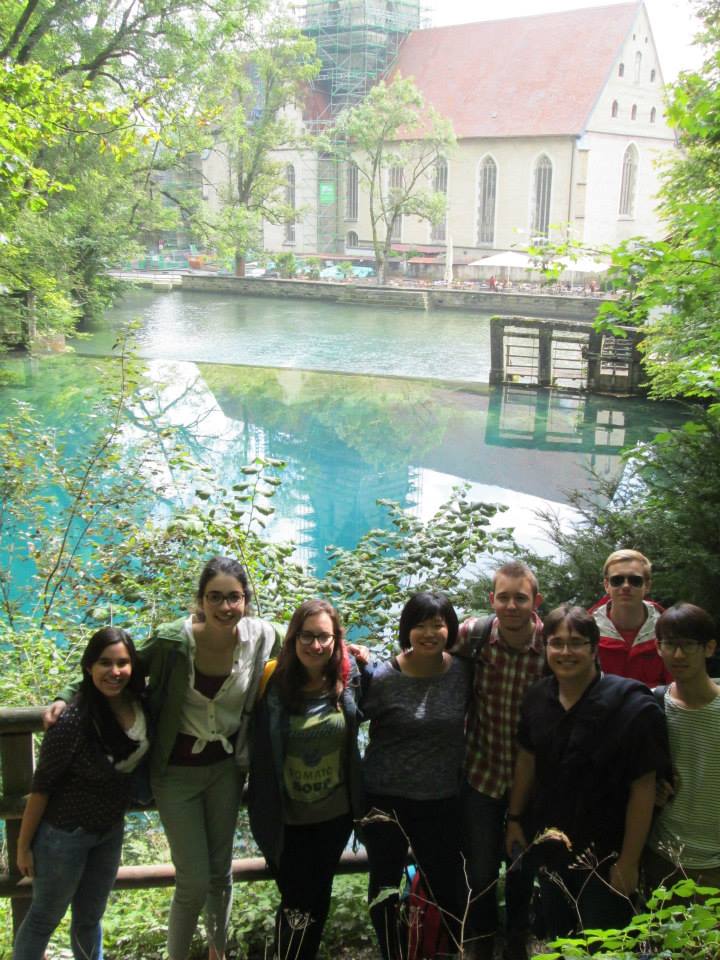So, this past week my class took a week-long trip to the small town of Blaubeuren, just outside of Ulm. Blaubeuren is adorable and famous for it’s blue pond created by a chemical reaction between lime and carbon dioxide and the poem about it written by Eduard Mölrike. It was a great week filled with German learning, hiking and many, many excursions. I had one of those coming full circle experiences because I visited a city for the second time in my life. That city, as shown by the three times it appears in the title of this post, is Ulm. Ulm is the home of the world’s tallest church tower, which I have now had the pleasure of climbing not only once, but twice. It was in fact the topic of my admission essay to Valpo, about however the world seems to be getting smaller and smaller, there are always surprising new things to learn as we go (that is a summary, the original was a very extended metaphor made worse by the fact that I had been abstaining from the English language– something which I think can be made clear is happening again based on the almost 3 lines that make up this sentence).

Above: Ulm ca. 2011 I’m proud to say that I got almost the exact same shot. You’ll note the subtle differences to the below shot of the Danube ca. 2014

One of the things that surprised me most was the way that my teacher described the tower. The Ulm Münster as it’s called was funded by the people of Ulm. The city itself was not very clean, being there was no modern sewage system at the time it was built and the church could house almost 5 times the number of people than the population of Ulm itself. For these people, my teacher said, coming to the Münster was like coming to heaven. It was clean, it was quiet, there was room to spare. Going back there now reminds me of how much framing influences how we perceive the world around us. Now, in a world filled with images, music and modern sewage, the Münster does not seem like quite such an astounding building, but at the time it was built, it was really one of the greatest feats of its time. And the same thing goes for everything that we see in life, the more that we see, the more that we have to compare it too, and the more we can learn about the reasons why things are the way that they are in the world.
Otherwise I have been doing my best to “live into” my new home, as one would say in German. I’ve been trying to think of ways to decorate my room and cook for myself to make my apartment more like home. Recently the addition of a new roommate from Spain has made it feel a lot more lived-in than before. We’ve also been working on the first project for my German class. My topic is about the local dialect called Schwäbisch, which I have turned out to be surprising good at pronouncing. Although many people find dialects to be a sign of simple mindedness, I find them totally fascinating. They give language personality and are proof of socio-linguistic developmental patterns that created many smaller pockets of dialects as opposed to one homogeneous language.
One of the other things that I’ve noticed most about the German language is that although I understand most of what’s being said, some of the subtleties of German body language haven’t necessarily been totally clear to me. Instead of using a wide range of facial expressions or a drastic change in tone, Germans like to change the structure of their sentences or throw in extra words in order to reveal their true emotions. When my teacher talked about this in class, I have to admit that something clicked in my mind. It brought back countless memories of me feeling like I was somehow unable to achieve the cool, collected calm that seems to permeate German culture. I think it might take a while before I can master the art of showing emotion verbally, but it will certainly be a challenge that I’m willing to take on. Hopefully that will make my German that much less frantic-sounding and more authentic.
And so I am off to go practice speaking without moving my face so much!
Bis bald!

Leave a Reply